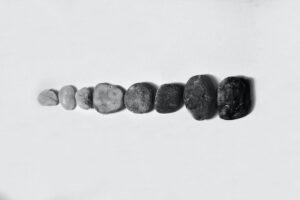Being diagnosed with, or even thinking that you or someone you love might have, borderline personality disorder (BPD) can be scary. You must first know that it’s inherently treatable as long as you work with the right professionals.
But even beyond that, you might have questions about BPD, particularly if you were diagnosed with or suspect you might have self-destructive BPD. Finding a mental health professional or clinic you can trust is essential; in the meantime, here are some basic things to know about this mental illness.
What is Self-Destructive BPD?
Self-destructive BPD is a type of borderline personality disorder in which people with BPD actively tend to sabotage themselves anytime they are responsible for something positive or making progress. A lack of sense of who they are leads to a strong dependence on others and feelings of anger, moodiness, and self-hatred that can be difficult to control.
Self-destructive BPD is one of four sub-types of borderline personality disorder, first classified by American psychologist Theodore Millon:
- Self-destructive BPD
- Discouraged BPD includes symptoms of feeling needy and dependent, craving the acceptance and approval of others while feeling inadequate or inferior to those around you.
- Impulsive BPD, in which patients can swing quickly from happiness and excitement to getting bored and angry with few or low-bar triggers. Patients with impulsive BPD push for being in control of those around them and being the center of attention.
- Petulant BPD, which leads to easy outbursts of anger and irritation. Individuals with petulant BPD push to get what they want and lash out when they can’t. They tend to be stubborn, defensive, and self-righteous.
Is Self-Destructive BPD Dangerous?
The most frequent symptoms of self-destructive BPD point to how dangerous this condition can become when left untreated. People with this subtype of BPD may experience the following symptoms:
- Feelings of hopelessness, to the point of depression
- Reckless behavior, often to sabotage their own happiness and satisfy a sense of self-hatred
- Frequent alcohol and drug abuse, both because of and leading to unstable emotions
- Thoughts and actions related to intentional self-harm, including cutting, burning, excessive scratching, and hitting
- Suicidal thoughts and behaviors
- Other self-destructive behaviors
Medical studies underline just how dangerous untreated self-destructive BPD can become for patients. One, for example, found that parental sexual abuse and emotional neglect were common denominators in making BPD patients self-destructive, with the harmful behavior in the patients’ past leading to more active self-harm.
Some BPD patients we treat can’t even imagine a life without a self-destruct button. Their lack of self-confidence and self-hatred are so embedded in their daily lives that they endanger themselves from a pure lack of self-care. And when they think they have no place in the world, the consequences can be devastating; 70% of all BPD patients have attempted suicide at least once, while 10% of individuals with BPD commit suicide.
Do you suspect that you or a loved one is suffering from Borderline Personality Disorder? Take our BPD Self Test to see if you should consider treatment.
How is Self-Destructive BPD Different From BPD?
There are a few essential differences and nuances regarding self-destructive BPD compared to other types of the same disorder.
Most importantly, individuals with self-destructive BPD tend to feel a significant and consistent amount of self-loathing and, in many cases, self-hatred. Other types of BPD can lead to reckless behaviors, but with self-destructive BPD, that behavior comes not out of a rush for euphoria. Instead, many patients with this type of disorder simply don’t care enough about themselves and even hate themselves enough that the consequences of their recklessness begin to appear less critical or even welcome.
For the same reason, patients with self-destructive BPD are also more prone to self-harm and suicide than those struggling with other BPD types. While both actions can occur with all kinds of BPD, patients who are diagnosed with self-destructive BPD are more likely to harm themselves because of their low self-worth and hopelessness about their person or future.
At the same time, it’s essential to recognize that self-destructive BPD is not entirely different and separate from BPD. The same triggers, including genetics and childhood trauma, can cause all types of BPD. Also, many of the same symptoms, from depression to fear of abandonment, tend to be the same or similar across all types. That makes diagnosing the correct type of BPD all the more critical, especially considering the potentially devastating consequences of this disorder.
Potential Treatments for Self-Destructive BPD
In part because of the self-hate and low sense of self from the patient, self-destructive BPD can be difficult to diagnose. Individuals with this condition don’t often seek help on their own. Instead, they depend on those around them as well as professionals to take the next step.
Fortunately, with the proper professional, treatment options for self-destructive BPD include many options:
- Individual therapy helps patients reflect on their thoughts and behaviors and recognize what may trigger their outbursts.
- Group therapy helps patients understand that their feelings aren’t unique and builds community bonds to work through resolutions.
- Cognitive-behavioral therapy helps patients develop ways to cope with their illness by changing how they think and react to the BPD.
- Medication can help to manage potentially harmful feelings, like depression, mood swings, and outbursts of anger.
Only some patients will benefit equally from all of these treatments. Instead, the right medical provider will develop a patient-specific treatment plan that considers the individual and their situation before recommending long-term ways to set the patient on the road to recovery.
Are you struggling with Borderline Personality Disorder and need to find treatment for yourself or a loved one? Acera Health offers BPD Treatment in Orange County for both California residents and people who are out-of-state.
Self-Destructive BPD and Acera Health
Self-destructive BPD can be scary for both the patient and those around them. The right mental health providers by your side can not just mitigate that fear but also help to treat this intrusive illness and build a path to recovery.
Our many options include residential and outpatient programs, including a partial hospitalization program (PHP). And our dual diagnosis program allows our patients to help find the root cause of alcohol and drug addiction, treating both alongside each other for maximum recovery opportunities.
We’re here to help you recover and are dedicated to returning you to a fully functioning, fulfilled life. Acera provides comprehensive behavioral and mental health treatment services. We have experience treating a variety of mental health conditions, including BPD.
Contact us for an initial consultation or to further discuss your options with self-destructive BPD.









